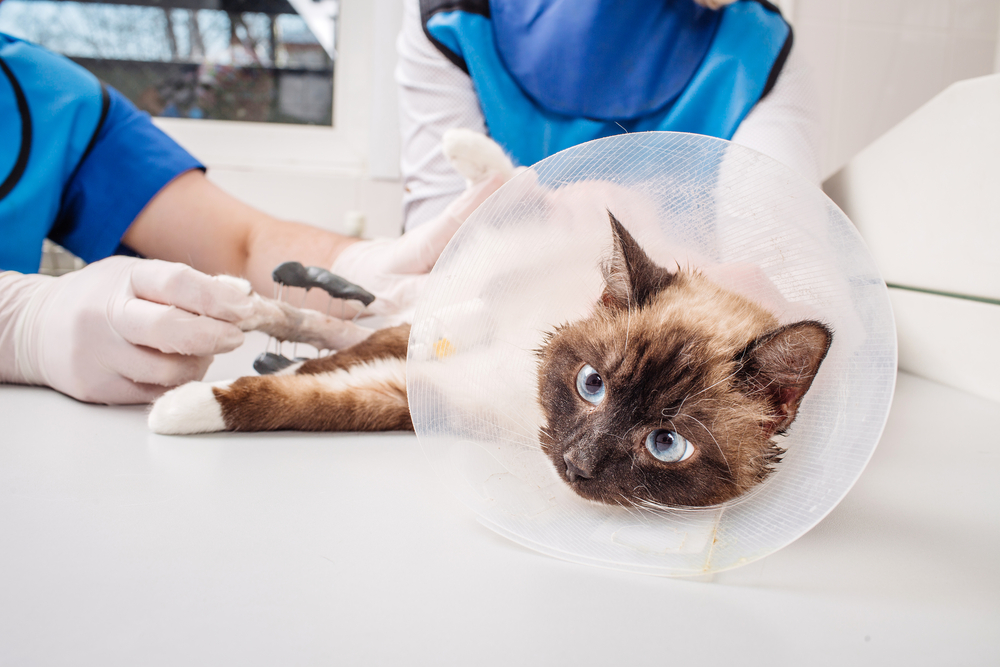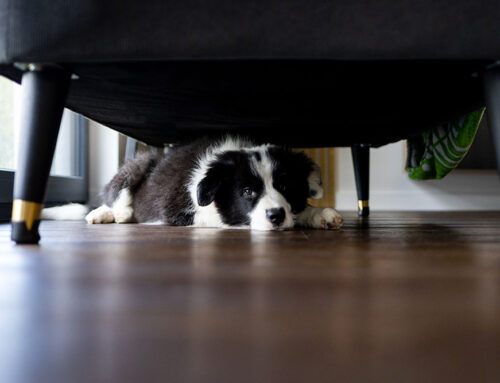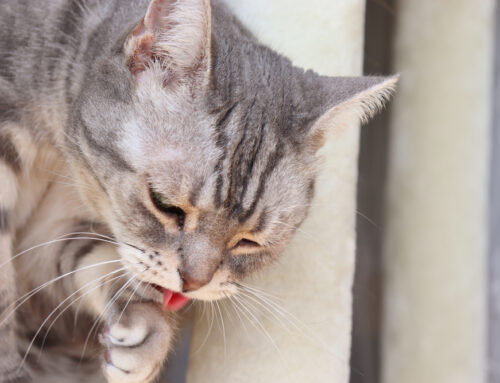A Closer Look at the Surgeries Pets Need Most Often
A torn ligament after a game of fetch, a dental extraction to relieve pain, or a spay to prevent future health risks are among the most common surgeries that help pets stay healthy throughout their lives. While the idea of surgery can feel overwhelming, knowing what to expect helps ease that stress.
At Greenfield Veterinary Clinic in Greenfield, WI, our team performs most procedures in-house, combining advanced surgical skill with the comfort of familiar faces and a supportive environment close to home.
Understanding Common Pet Surgeries
Essential Surgeries: Spaying and Neutering
Spaying and neutering are among the most common and beneficial veterinary surgeries. Beyond preventing unwanted litters, these procedures provide powerful preventive health advantages. Spaying eliminates the risk of pyometra, a dangerous uterine infection, and greatly reduces the likelihood of mammary tumors when performed before the first heat cycle. Neutering removes the risk of testicular cancer and can help decrease marking, roaming, and certain aggressive behaviors.
Crucial Orthopedic Surgeries: Cruciate Ligament Repair
Cruciate ligament injuries are one of the most frequent orthopedic problems in dogs, particularly in active or large breeds such as Labradors, Golden Retrievers, and Rottweilers. A torn cranial cruciate ligament (similar to a human ACL tear) leads to pain, swelling, and lameness that usually requires surgical repair.
The Tibial Plateau Leveling Osteotomy (TPLO) remains the gold standard. TPLO surgery stabilizes the knee by altering its biomechanics, restoring comfort and function while helping to prevent arthritis. With consistent rehabilitation, most dogs regain full mobility within a few months and enjoy long-term joint health.
Managing Fractures and Broken Bones
Accidents happen, and fractures are among the most urgent reasons pets need surgery. Modern orthopedic techniques using plates, screws, and pins stabilize bones and ensure proper alignment for healing.
In some cases, amputation may be the most compassionate choice for pain relief and recovery. Amputation often restores comfort and mobility, and most pets adapt quickly, returning to their normal activities with confidence.
Digestive Tract Surgeries: Removing Foreign Bodies
Dogs and cats are naturally curious, and sometimes that curiosity leads to swallowing objects like toys, socks, or bones. These items can cause dangerous blockages that require surgery.
Early recognition is key. Symptoms such as vomiting, loss of appetite, or straining to defecate should prompt immediate evaluation.
Effective Cancer Treatments: Mass Removals
Cancer is one of the most common health challenges for aging pets. Surgical removal of tumors often offers the best chance for a cure, especially when addressed early.
Approach depends on the tumor’s size, type, and location. Some require wide margins to ensure full removal, while others may benefit from additional chemotherapy or radiation. Early detection and treatment can significantly improve quality of life and long-term outcomes.
Dental Procedures: Treating Fractured Teeth
Healthy teeth are essential to overall well-being. Fractured teeth cause pain and infection if left untreated. When the inner pulp is exposed, bacteria can lead to abscesses and swelling. Depending on severity, treatment may involve root canal therapy or extraction. Prompt diagnosis and treatment of fractured teeth protects oral and systemic health.
Urinary Tract Surgeries: Cystotomy Procedures
Bladder stones and urinary blockages, especially in male cats and small-breed dogs, are medical emergencies that can become life-threatening. Cystotomy, a surgery to open the bladder, removes stones or obstructions and restores normal urine flow. After surgery, prescription diets and follow-up urine testing help prevent recurrence and keep the urinary system healthy.
Specialized Care for Brachycephalic Breeds
Flat-faced breeds like Bulldogs, Pugs, and Persian cats are prone to airway difficulties due to their unique anatomy. Brachycephalic dogs may need corrective surgeries for narrowed nostrils (stenotic nares) or elongated soft palates. These procedures improve airflow, reduce snoring, and prevent dangerous breathing crises- allowing pets to breathe, play, and rest comfortably.
Hip and Joint Surgeries: Solutions for Dysplasia
Hip dysplasia is a painful condition in large and giant breeds that causes looseness, inflammation, and loss of mobility. Hip dysplasia surgical options vary depending on the pet’s age, activity level, and degree of joint damage.
One common procedure, the Femoral Head Ostectomy (FHO), removes the femoral head and neck to eliminate bone-on-bone contact. As scar tissue forms a “false joint,” pets regain comfort and mobility.
Soft Tissue Repair: Lacerations, Bite Wounds, and Abscesses
Many pets require surgery for skin or soft-tissue injuries. Lacerations from accidents or rough play can easily become infected without proper cleaning and closure.
Bite wounds often appear small but may trap bacteria under the skin, leading to deeper infections. Cat bite injuries frequently develop into abscesses that require surgical drainage and thorough cleaning to heal completely. Surgical repair removes damaged tissue and closes wounds in a way that promotes healthy healing.
Advanced Techniques and Technologies
Laser Surgery: Precision and Enhanced Care
Modern laser technology has revolutionized veterinary surgery. Greenfield Veterinary Clinic offers laser surgery that improves precision while reducing bleeding, swelling, and postoperative discomfort.
Lasers seal blood vessels and nerve endings as they cut, allowing faster recovery and less pain. They are especially useful for spays, neuters, mass removals, and dental procedures, where precision and comfort matter most.
Post-Operative Care and Recovery Insights
Recovery begins the moment your pet wakes up, and what happens at home plays a major role in how smoothly the healing process goes. Following your veterinarian’s post-surgery instructions carefully helps prevent complications and ensures your pet’s comfort every step of the way.
Pain management is the first priority. Your veterinary team may prescribe anti-inflammatory medications or pain relievers to keep your pet comfortable and encourage gentle movement during recovery. Administer these medications exactly as directed, and contact the clinic if your pet seems unusually restless, vocal, or reluctant to move.
Activity restriction is equally important. Even energetic pets need time to rest so tissues can heal. Keep walks short and on-leash, limit jumping or running, and avoid stairs when possible. For cats, confine them to a quiet room where they can relax without the temptation to climb or play too roughly.
Incision care prevents infection and supports proper healing. Check the surgical site daily for redness, swelling, discharge, or missing sutures, and notify your veterinarian if you notice changes. Use the prescribed cleaning products only- never apply over-the-counter ointments without approval.
Soft-tissue surgeries typically heal within 10 to 14 days, while orthopedic procedures can take several months with structured rehabilitation. Providing a calm, comfortable recovery space reduces stress and keeps healing on track. Using an Elizabethan collar or recovery garment prevents licking or chewing, both of which can reopen incisions or introduce infection.
In some cases, your veterinarian may recommend physical therapy or controlled exercises once healing has progressed. Regular follow-up visits allow your veterinary team to monitor progress, adjust medications, and confirm that your pet is healing safely and comfortably.

Building a Relationship with Your Vet
Personalized Veterinary Support and Care
Surgical success relies on teamwork between you and your veterinary team. Clear communication, detailed pre-operative planning, and attentive aftercare all contribute to better outcomes.
At Greenfield Veterinary Clinic’s surgical center, each procedure is customized to your pet’s needs. From anesthesia monitoring to pain control, every detail is designed to keep pets safe and owners informed.
Greenfield Veterinary Clinic’s in-house diagnostics, including digital X-rays, ultrasound, and lab testing, provide rapid insights that support safer anesthesia, precise surgery, and effective post-op care.
Your Pet’s Surgical Journey Starts with Informed Decisions
Understanding the most common pet surgeries empowers you to make confident, compassionate choices about your pet’s care. Whether it’s a routine spay or a complex orthopedic repair, partnering with a skilled, compassionate surgical team ensures your pet receives exceptional treatment every step of the way. Greenfield Veterinary Clinic’s surgical expertise and advanced diagnostics provide peace of mind and outstanding outcomes close to home.
For questions, guidance, or to schedule a consultation, contact us or request an appointment today. Our experienced team is here to guide you and your pet through every step of the surgical process with compassion, skill, and clear communication.







Leave A Comment